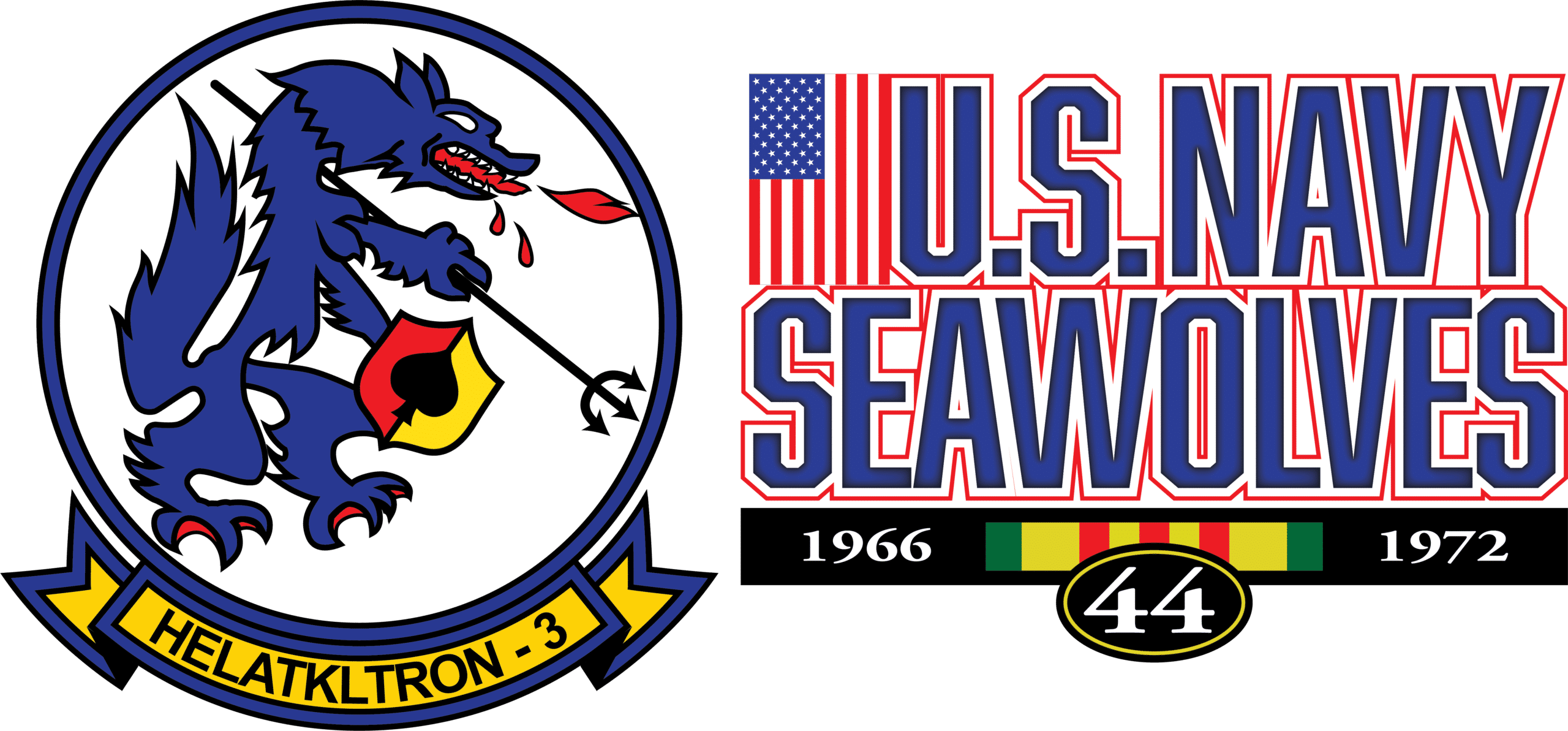from Chronicle of War: Vietnam
Spring 1990
When the US Navy was first charged with denying the Viet Cong use of the giant Mekong Delta waterway it quickly became apparent that in addition to constant river patrols conducted by small River Patrol Boats(PBRs), that aerial surveillance and fire support was vitally needed as well. The reasoning for this was quite apparent for early in developing the required tactics for “Operation Game Warden” it was obvious that the small PBRs, unarmored and limited in their ability to see through the often dense riverbank undergrowth, were all too easily prone to ambush or simply being overwhelmed by a well concealed enemy force hiding in the brush.
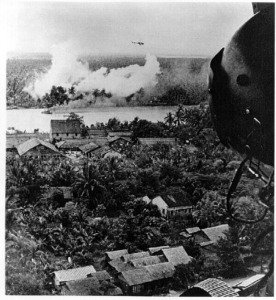 The answer then lay in devising a system of air cover that would provide a visual and communications link between the PBRs and conditions they were likely to encounter beyond their limited field of vision.
The answer then lay in devising a system of air cover that would provide a visual and communications link between the PBRs and conditions they were likely to encounter beyond their limited field of vision.
To implement this tactic, the Navy formed the concept of converted LSTs of WWII vintage that became mother ships for the patrol boats. Calling themselves “Seawolves”, these Naval helicopter pilots found themselves faced with an entirely different mission than that for which they’d been trained in the ship to ship or ship to shore air logistics or ASW role. Supporting the PBRs meant learning a whole new regime of helicopter warfare, a tactic already pioneered by the Army in Vietnam. Using UH-1B Huey helicopter gunships borrowed from the Army, the Naval crewmen soon learned that war in the Mekong Delta was as deadly and fierce as anywhere else in Vietnam.
Sam Aydelotte, former officer-in-charge of US Navy Helicopter Attack (Light) Squadron three (HAL-3), Detachment Three, helped pioneer the tactics which enabled the Seawolf helicopter pilots to hone their skills in combating the mercurial Viet Cong. A native of Texas, now residing in Chula Vista, California, former Lieutenant Commander Aydelotte described what unexpected events could and did happen during a “routine” patrol by the Seawolves while operating out of Vinh Long in the Mekong Delta, 55 miles southwest of Saigon.
It began as an two hour reconnaissance mission over Viet Cong occupied territory on the northeast bank of the Co Chien River, about 20 miles southeast of Vinh Long, he explained. There was a Navy combat correspondent aboard the lead chopper, while a Navy combat photographer rode the cover ship.
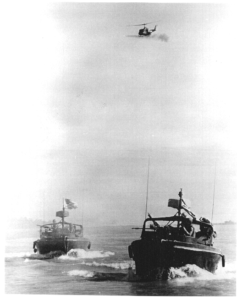 “By the time we returned, over four hours later, we had been involved in three separate fire fights, survived a mortar attack and an attempt to blow up the depot where we were refueling,” he said.
“By the time we returned, over four hours later, we had been involved in three separate fire fights, survived a mortar attack and an attempt to blow up the depot where we were refueling,” he said.
The basic job of the Seawolves of the Navy’s Task Force 116 (Operation Game Warden), had as it’s mission the preventing of Viet Cong movements on the rivers of the Mekong Delta, and the Rung Sat Special Zone swamp area surrounding the shipping channel to Saigon. The flight referred to was a key part of this job.
Aydelotte’s call sign was Seawolf 35, as the pilot of the lead ship. His copilot on that trip was his prospective relief as O-in-C of the detachment, Lieutenant Commander Eugene Rosenthal of Moline, Illinois. They were followed by “Seawolf 33”, LTJG Mike Peters of South Bend, Indiana, flying his last mission in Vietnam, and LTJG Bill Mackie of Ridley Park, Pennsylvania.
Crew members of the lead ship were 19 year old Aviation Structural Mechanic Third Class Jack Williamson Jr., of Middletown, Ohio, the crew chief and left door gunner, and 22 year old Aviation Machinist Mate Third Class Jerry Lassiter, of McMinnville, Tennessee, the right door gunner.
Their counterparts on the cover ship were 22 year old Airman Wendell Maxwell, Burley Idaho, and 22 year old Airman Robert Nunes, Jamestown, Rhode Island.
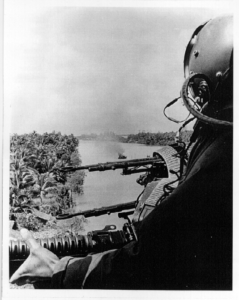 At 0930, about 30 minutes after the helos took off, a report was received from the Ben Tre sector advisor concerning a Vietnamese Army unit which was under fire in an area about 45 miles southeast of Vinh Long.
At 0930, about 30 minutes after the helos took off, a report was received from the Ben Tre sector advisor concerning a Vietnamese Army unit which was under fire in an area about 45 miles southeast of Vinh Long.
The two gunships scouted the area for 35 minutes, maintaining contact with a ground forces advisor, but found no activity. Just as LCDR Aydelotte requested permission to depart the area because of an impending fuel shortage, LTJG Peters received sniper fire from the tree line.
Airman Maxwell dropped a smoke marker in the area of fire and both helos attacked the tree line with automatic weapons and rocket fire.
After 15 minutes, the Seawolves attack was broken off so that the two choppers could refuel and rearm aboard the Hunderton County(LST-838), home base for HAL-3, Det 4, on the Ham Loung River.
Half an hour later the two helos prepared to lift off and return to their own sector of operations in the Co Chien River area. After the lead aircraft had taken off, a scramble message was received, reporting that a PBR had been hit by recoilless weapon fire in the Ham Loung River, directly across from the town of Ben Tre. A US Army L-19 aerial observer reported an estimated 300 VC in the area. There was also a request for medical evacuation of one of nine sailors wounded in the battle.
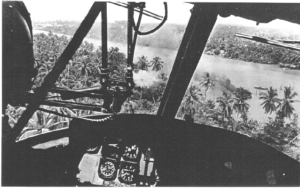 At 1120, the Vinh Long helicopter team was joined en route to Ben Tre by Hunderton County Seawolves 43, Lieutenant Bill Barnes, Ensign Jim Beard, and 40, LTJG H. Wade Turner, and LTJG Marv Bulson.
At 1120, the Vinh Long helicopter team was joined en route to Ben Tre by Hunderton County Seawolves 43, Lieutenant Bill Barnes, Ensign Jim Beard, and 40, LTJG H. Wade Turner, and LTJG Marv Bulson.
Four minutes later, LCDR Aydelotte made a short automatic weapons run on a tree line from which the small arms fire had been received, directly across the river from Ben Tre. His crew chief, Petty Officer Williams, dropped a purple smoke grenade, marking the area. Fire from the helos was light and very tight because of friendly personnel in the area.
LT Barnes went in to recover the seriously wounded man, escorted by LCDR Aydelotte, and LTJG Peters. The wounded man was taken to Dong Tam. The three remaining choppers then made several more assault runs on the area, firing automatic weapons and rockets. Two other PBRs were on the river still attempting to aid the stricken vessel, but were held off by heavy weapons fire from the river bank. One of these also received recoilless rifle hits on the port side, but suffered no casualties. />
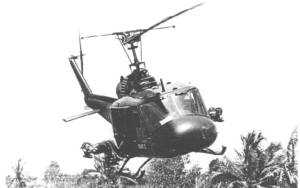 The helicopters continued to fly over the areas, returning and suppressing ground fire. But it was clear reinforcements were needed. The sector advisor then called in two Air Force F-100s for an air strike on the area. VC fire ended in a flame of napalm.
The helicopters continued to fly over the areas, returning and suppressing ground fire. But it was clear reinforcements were needed. The sector advisor then called in two Air Force F-100s for an air strike on the area. VC fire ended in a flame of napalm.
At noon, 36 minutes after the three Seawolves first entered the battle, permission to secure for refueling and rearming and to clear the area for an impending air strike, was requested and granted. The ships broke off the engagement and flew to Ben Tre Airfield, where they were assisted in their refueling by Vietnamese Army personnel.
Shortly afterward, there was a change in the composition of the group as LT Barnes returned from Dong Tam and LTJG Peters left for Vinh Long to repair two bullet holes in his main rotor.
A fourth helo, based at Dong Tam, joined the three remaining at Ben Tre. While the ships were being rearmed, a Vietnamese soldier noticed a wire running through the grass. LT Barnes cut the wire and traced it to a command detonated satchel explosive charge hidden in a group of fuel drums near a 10,000 gallon fuel bladder 100 yards behind the parked choppers.
Ten minutes after the discovery of the explosive charge, a mortar attack on the airfield began. Ten mortar rounds hit the airfield before all four choppers completed the scramble and were airborne. None was hit.
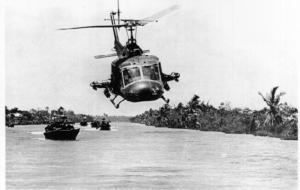 Aydelotte reported to the Ben Tre sector advisors that the airfield was under attack. The four choppers made several rocket attacks on the area from which the mortars were coming, about a mile and a quarter northwest of the airfield. Later investigation by the Army revealed two 82mm mortars destroyed and seven enemy killed.
Aydelotte reported to the Ben Tre sector advisors that the airfield was under attack. The four choppers made several rocket attacks on the area from which the mortars were coming, about a mile and a quarter northwest of the airfield. Later investigation by the Army revealed two 82mm mortars destroyed and seven enemy killed.
At 1325 the Seawolves landed at Dong Tam air base, where they finished rearming and were airborne within five minutes. Seawolves 40, 43, and 61 returned to their home bases.
At 1348, four hours and five minutes after he took off on the “routine” reconnaissance mission, Aydelotte returned to Vinh Long.
Although few of the missions have as much excitement as this one, all of them were a challenge to the Seawolves, all of whom were volunteers.
The original 32 Seawolf pilots, already proficient in fixed wing aircraft and helicopters, arrived in Vietnam between June and December 1966. They studied for three months under Army pilots at Soc Trang, Bien Hoa, and Vinh Long, learning combat tactics and gaining familiarity with the Hueys. Here they were given the opportunity to serve as copilots and aircraft commanders.
Typical of these original pilots was LTJG Peters, whose last mission in Vietnam was the “routine ” one previously described. He left Vietnam in 1967. LCDR Aydelotte described LTJG Peters as an outstanding pilot. “He’d been written up for more awards than any other man in the detachment. He’d amassed over 600 hours in the Hueys, earned the Distinguished Flying Cross and Purple Heart while serving with the Army, and additional DFC’s with the Navy.
New pilots assigned to the unit were given 15 hours of aircraft familiarization at Ft. Benning, Georgia, and then received their in country training from the now experienced Seawolves.
The gunners and crew chiefs trained at Ft Rucker, Alabama. They were instructed in the use of the M-60 machine gun as a helicopter weapon, as well as tactics, aerial observation and recognition and night gunnery. They also underwent brief maintenance training at Ft. Eustis, Virginia.
The Vinh Long Detachment of HAL-3 eventually consisted of eleven pilots and ten enlisted crew members. They had two armed UH-1B Huey helicopters, and one slick, an unarmed maintenance helicopter. The Hueys were former Army choppers that had been modified for Navy use.
They were supported by a maintenance crew of one officer and thirty four enlisted men, who were also responsible for servicing the choppers of three other HAL-3 detachments, at Dong Tam, Binh Thuy, and aboard an LST on the Bassac River. The maintenance crew members were trained at various Army bases in the US, depending on their specialties. Ordinance men were trained at the Aberdeen Proving Ground, Maryland, while the electronics technicians received their training at Ft. Gordon, Georgia.
Once in Vietnam, pilots, crewmen, and maintenance men were all put on the job as soon as possible owing to the intensity of action then in the Mekong Delta. Pilots and crew stood duty on a daily rotation, 24 hours on, 24 hours off. In addition to the scheduled missions, they were always in a standby status in case of a “scramble”, an emergency call for assistance from a PBR, an outpost under attack, or any time their heavily armed choppers were needed, which was generally quite often.
Heavily armed is a description which almost attains the category of understatement. Each helo had four externally mounted M-60 machine guns, fired by the copilot; two pods of seven 2.75 inch rockets fired by the pilot; two more M-60s, handled by the crew chief and door gunner; two M-79 grenade launchers, one spare M-60, and assorted M-16 rifles and .45 caliber personal side arms for defense, should a chopper be forced down in enemy territory.
Heavily armed and always ready, the Seawolves were prepared for anything and were seldom disappointed. The maintenance men serviced the Hueys, keeping them in top condition; the crew chief checked out the aircraft and assured everything was running smoothly; the door gunner made sure all of the weapons were operating properly; the copilot assisted the pilot, acting as a navigator, controlled the external M-60s and directed the door gunners fire, while the pilot fired the rockets, and flew the aircraft. Together they comprised the fighting team known as the Seawolves, routinely scrambling to hit the Viet Cong and save American lives, and routinely fulfilling their impressive list of broad responsibilities.
As Sam Aydelotte puts it, “For the Seawolves of the Delta, doing the outstanding was routine. Sometimes we did even better and accomplished the impossible.”
